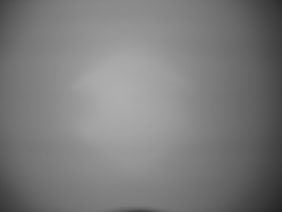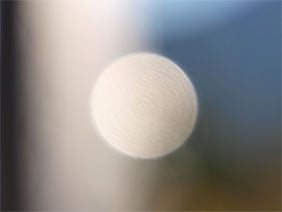Olympus Zuiko Digital 12-60mm 1:2.8-4
-
-
Written by Gordon Laing
Olympus Zuiko Digital 12-60mm design and build quality
The Olympus Zuiko Digital 12-60mm is fairly compact for a 5x general-purpose premium quality zoom, especially considering the f2.8 aperture at its widest-end. Measuring 79.5mm in diameter, 98.5mm in length and weighing 575g, it’s smaller and lighter than, say, Canon’s EF 24-105mm f4L at 83x107mm and 670g, although the Canon does have built-in stabilisation. We’ve pictured the 12-60mm below alongside the original Zuiko Digital 14-45mm kit lens, which measures 71x87mm and weighs 285g.
Zoom the 12-60mm into its longest focal length and the barrel extends using one section by 45mm. The filter thread measures 72mm and the end section doesn’t rotate while focusing. A petal style lens hood, clip-on lens cap and carrying pouch are supplied.
The optical construction consists of 14 elements in ten groups. The maximum aperture is a bright f2.8 with the lens zoomed-out to 12mm, and f4 when zoomed-into 60mm. The focal ratio increases to f3.2 at 18mm and f3.5 at 27mm. The closest focusing distance is 25cm, which allows some respectable close-ups when zoomed-into its longest focal length.
The 12-60mm is an ideal match for the flagship E-3 body, feeling very well-balanced and in proportion. Fitted on an E-5xx series, it clearly feels like a larger lens, although remains perfectly usable. Fitted on the smaller E-4xx series though, the 12-60mm feels front-heavy, and while it’s still possible to use it, we’d advise trying the combination in person yourself first. See below for some popup flash issues concerning the 12-60mm on smaller bodies.
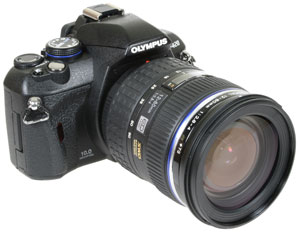 |
The Zuiko Digital 12-60mm belongs to the Olympus Pro range, with the Standard range below it and the Top Pro range above it. Don’t let its position in the middle range fool you though – the 12-60mm is a high quality lens and as far as we understand, only misses out on the Top Pro category by not having a constant aperture throughout its range.
The build and mechanical quality is excellent – roughly equivalent to models like the Zuiko Digital 7-14mm. The 12-60mm is both dust and splash proof with a rubber sealing around the edge of its metal lens mount – for full weather-sealing though you’ll also need a suitably equipped body like the E-3.
The zoom ring is closest to the lens mount, and like the 7-14mm, employs a comfortable rubber grip with a repeating square pattern. In operation the zoom feels very smooth with no catching, and there’s little additional resistance when the camera’s pointing vertically upwards. Out test model had been in regular use for around six months with no evidence of creep, although until it gets older, we can’t say whether this will remain the case.
It should be noted though that while the higher popup flash on the E-3 will just about clear the 12-60mm’s barrel even when zoomed-out to 12mm (albeit without the lens hood attached), the shorter height of the popup flashes on the E-5xx and E-4xx models won’t at wider focal lengths. You can see examples below taken with the 12-60mm zoomed-out to 12mm when mounted on the E-3 and E-420, using their respective popup flashes from a distance of 1m.
|
Olympus 12-60mm with popup flash on E-3 |
Olympus 12-60mm with popup flash on E-420 | |
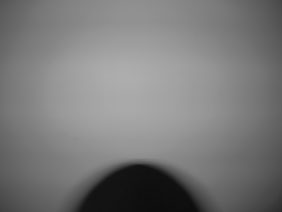 | ||
| 12-60mm at 12mm, f2.8 (24mm equivalent) | 12-60mm at 12mm, f2.8 (24mm equivalent) |
The shot taken with the E-3 impressively shows virtually no shadow at all – there’s a slight hint at the bottom of the frame, but zoom-in by just 2mm and it’s gone. Sadly the same isn’t true for the E-420 though. At the same distance of 1m, we found the 12-60mm barrel (without the lens hood) cast a shadow with the popup flash from 12mm to approximately 30mm. It’s worst when zoomed-out to 12mm, where the shadow as seen above can occupy a large portion of the frame.
| |||
This isn’t unusual when you mount a bigger lens on a smaller body, but is worth noting. To avoid this on smaller bodies, you’ll need to zoom-in or use an external flashgun. Alternatively if you’re the experimental type, you could always try shooting with the camera held upside-down so the shadow is cast upwards instead of downwards. Since most flash shots are of people with space above their heads, this trick can sometimes avoid the shadow being a problem.
One final note here on out-of-focus effects. While the bokeh can look fine on normal photos, patterns of concentric rings can be seen on blurred point sources of light like the reflection of the Sun on rippling water.
You can see a cropped example here taken at 60mm f4.0, although to be fair we deliberately pursued this effect rather than finding it had occurred in natural use. Coincidentally, a similar effect was noticed when testing the Olympus 14-42mm and 25mm lenses.
Olympus Zuiko Digital 12-60mm focusing
The focusing ring on the 12-60mm is positioned at the end of the barrel with a focus distance window sandwiched between it and the zoom ring. The focusing ring features a generous-sized grip with a stripped rubber coating. This feels smoother than the zoom ring and not unlike the focusing rings on Canon’s L lenses.
The 12-60mm is one of only three lenses in the Olympus range at the time of writing to feature Supersonic Wave Drive (SWD) auto-focusing. Like the Canon USM and Nikon SWM systems, the Olympus SWD motor allows lenses to focus quickly and quietly. Olympus isn’t shy in talking-up its performance either, claiming the 12-60mm offers the world’s fastest autofocus when fitted on the flagship E-3 body.
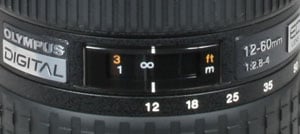 |
As we detailed in our Olympus E-3 review, the combination can certainly be extremely fast. If the E-3 locks onto its subject – as it does most of the time – the lens appears to snap into focus almost instantly with a brief and faint mechanical sound. Mounted on the E-420, the 12-60mm remains very fast at auto-focusing, and only felt fractionally slower than the E-3; you can see a comparison in our video tour. The bigger difference in the 12-60mm’s AF performance on each body concerned their number of focusing points and subsequent ease of locking onto the subject; the E-420 often searched with trickier subjects when the E-3 just locked-on.
Unlike the vast majority of Four Thirds lenses, the 12-60mm avoids motor-assisted manual focusing and instead employs a mechanically-linked system. So unlike those other lenses, you can adjust the focus while the camera is powered down, although it also means the focus direction option available on some E-series DSLRs will have no effect. Which system is superior is down to personal preference, but as far as we’re concerned, the traditional mechanically-linked system used by the 12-60mm feels more tactile, responsive and is ultimately preferable to the motor-assisted models; we’re pleased to see it on the 12-60mm.
Note the 12-60mm is not currently compatible with the contrast-based ‘Imager’ AF system during Live View on the E-420 and E-520 bodies and it’s unknown if there will be a firmware update in the future; Olympus will only say they are ‘looking into it’. So mounted on either the E-420 or E-520, you’ll have to choose between the slightly slower Hybrid mode or the traditional phase change mode when auto-focusing in Live View.
